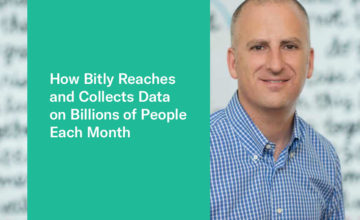For product managers at SaaS companies offering freemium mobile apps and trials, turning free users into paid ones is often a primary goal. The faster and more effectively you increase your free trial conversion rate, the higher your MRR and the faster your app can grow.
While plenty of marketing and sales ink is spilled in that effort, the key is data. The answer to which features encourage free users to upgrade lies in your data. The reason why some user segments take longer to convert to paid than others is in your data. The touchpoint that leads most directly to conversion lives inside your data.
In other words, speeding up customer onboarding and the free trial conversion rate is all about turning user data into a better product and more effective product marketing for SaaS companies.
Below, we explain how you can connect your data with Indicative in order to better leverage that data to increase paid users and SaaS onboarding.
How to Connect Your Data With Indicative
By connecting your data with Indicative, product managers can use the tools we’ll get into in the next section to more effectively increase their free trial conversion rate. No matter where your data is generated or stored, piping it into the Indicative platform is simple thanks to a host of integrations with various data sources.
The Indicative Library—available on all plans: Free, Pro, and Enterprise—makes two options available for collecting data and sending it to Indicative.
- Integration via SDK: This is the best option if you aren’t already tracking customer data in a customer data platform (CDP) or data warehouse. Available in JavaScript, React Native, Java, Python, iOS, and Android, Indicative’s SDK integration automatically track client-side data. That includes page views, web sessions, and key properties like browser, operating system, referrer, language, page title, URL, and any existing UTM parameters.
- Integration via REST API: For more advanced product and data teams, Indicative offers integration via REST API. This is the best option for those needing the flexibility to send any event or user data, from any source, to Indicative. As long as you build the data pipeline to our API, you can create and modify all your data within Indicative.
Indicative also offers more than a dozen self-service integrations to connect to your data sources—available on all plans. The most relevant for our purposes here include:
- Segment integration: The Segment integration is a quick and easy way to share data from Segment with Indicative, and it can be set up by any business user.
- mParticle integration: Similarly, the mParticle integration can be set up by any business user and allows product managers to bring data into Indicative without any coding or technical resources.
- Snowplow integration: The Snowplow integration also allows for quick set up, but it will require a technical resource. However, for paid customers, Snowplow will set up the integration for you.
If the integrations above don’t get all the data you need into the Indicative platform, we also offer custom data sources for Enterprise customers. With these, you can connect directly to a data warehouse, including the following SaaS platforms:
Notably, Indicative is the only Customer Analytics solution that connects directly to your data warehouse—pulling in any event and any user data from these sources.
That’s powerful because it enables product managers and other SaaS business users to connect their data without technical resources or advanced know-how. It also separates Indicative from other Customer Analytics tools. Amplitude, for example, doesn’t offer any data warehouse integrations. Mixpanel, on the other hand, does but only for Google Cloud Storage and Amazon S3 (whereas Indicative also supports Snowflake and Redshift). Even then, you still need engineering resources to model the data to fit Mixpanel’s strict requirements.
Simply put: Indicative’s direct data warehouse connection is faster, easier to set up, and more flexible.
How to Speed Conversion of Free to Paid Users With Indicative
Now that your data is pumping into the Indicative platform, there are several features you can use to increase onboarding and bump up your free trial conversion rate. If your goal is to make that conversion process happen faster, here’s how Indicative can help you do that.
Multipath Customer Journey Analysis
To speed up the free trial conversion rate, you need to develop an understanding of the customer journey that happens before a customer upgrades.
- Which behaviors do they exhibit?
- What touchpoints do they make along the way?
- Where do they encounter friction?
- What are the different paths customers take from free to paid?
- Which path leads to the highest conversion rate?
- Which path leads to the quickest conversions?
You can answer these questions (and others) by visualizing all the paths users take with our unique Multipath Funnel tool.
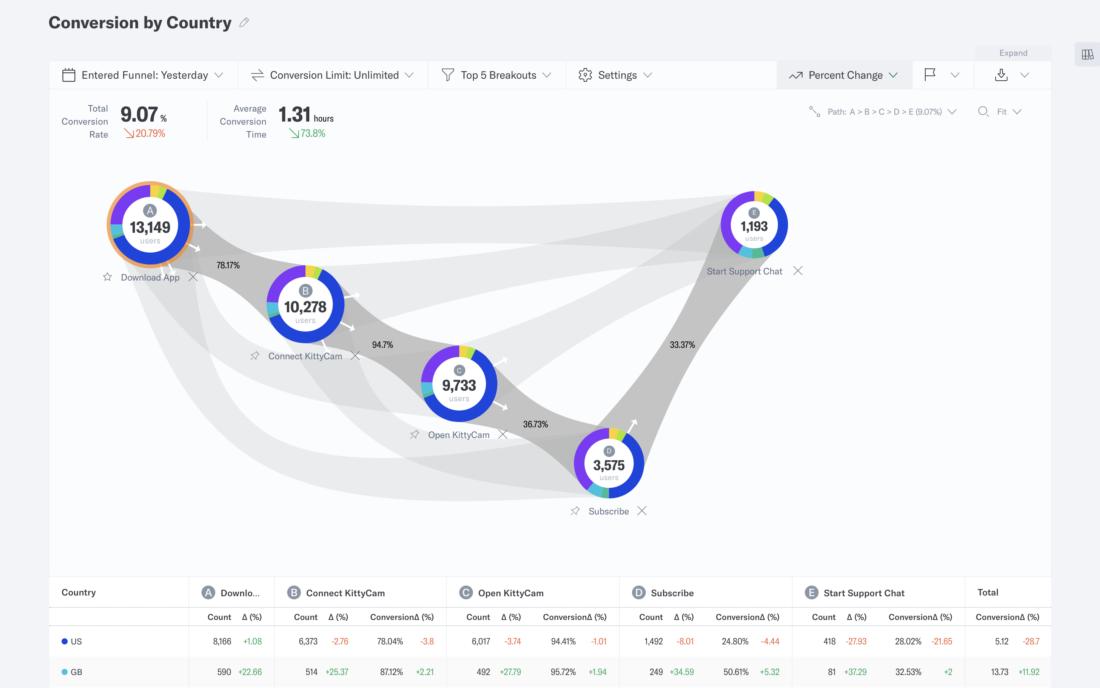
Since the customer journey isn’t usually a straight line, the paths free users take to upgrade are likely different for different kinds of users. A customer may have enabled notifications for live classes that prompt them to log in more frequently, for example. Maybe you launched an email campaign promoting a discount. Seasonality may prompt some users to drop off and increase customer churn.
To combat that, the Multipath Funnel tool lets you view multiple funnels at once, enabling you to:
- Compare conversion rates for multiple paths at the same time
- Identify high-performing or low-performing steps between events
- Explore users who are most likely to convert
Segmentation
The Segmentation tool can help product managers understand which events and users make a difference when it comes to free to paid conversions. How do different events affect upgrades? By segmenting out free and paid users, you can easily identify differences in each type of user, as well as how they interact with your app and what prompts paid users to upgrade.
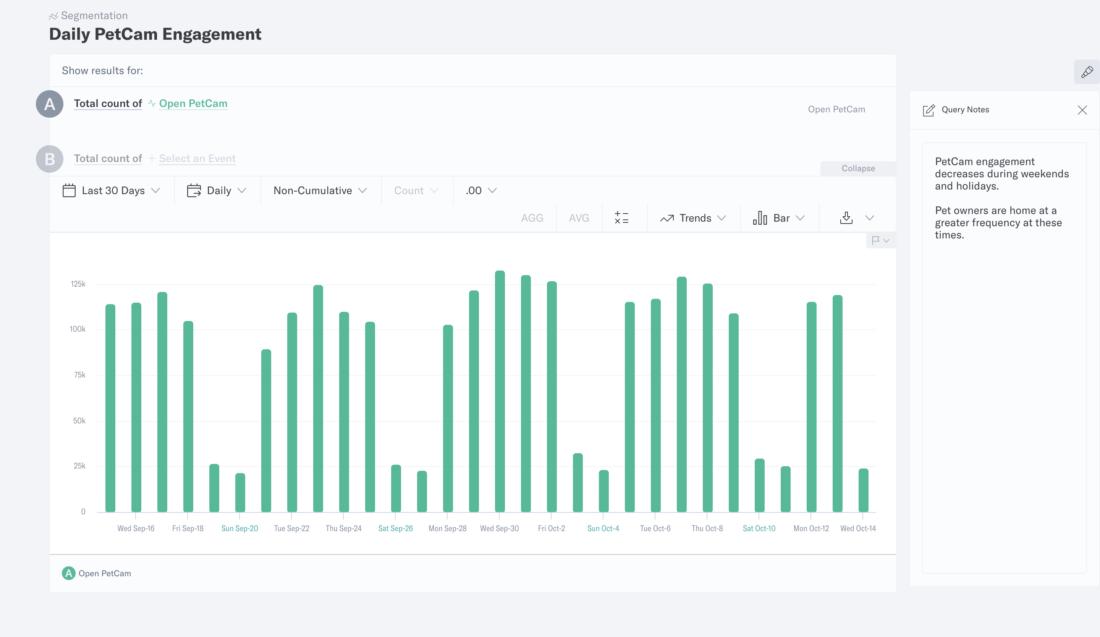
For example, which users are hitting your paywall? Are paid users more likely to utilize the journaling feature in your app? How do users in each plan tier behave differently? Which users are bumping up against the limits of your free plan? Are they running out of workouts? Of time?
Identifying and segmenting out these users can help inform every campaign you employ to optimize your free trial conversion rate.
Cohort Analysis
In a similar vein, understanding users who quickly upgrade to paid is the key to accelerating the overall free-to-paid conversion journey. Using Indicative’s Cohort Analysis tool, you can compare engagement across users who remain on the free plan versus those who convert to paid.
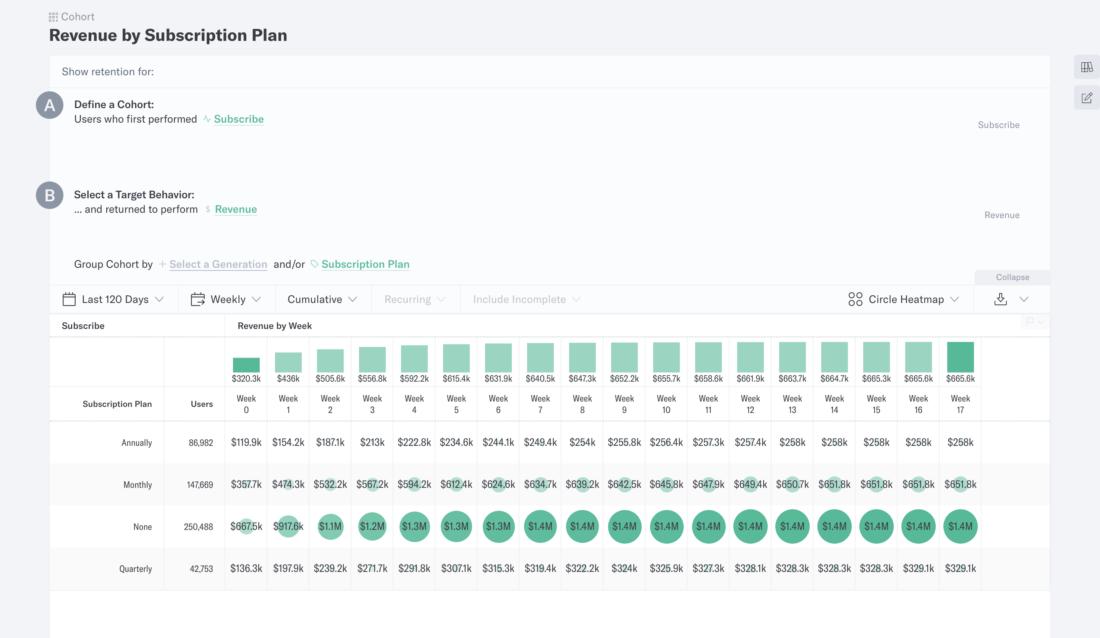
- How long do paid users use your mobile app before they upgrade?
- How many times per day, week, and month do upgraded users open your mobile app compared to free users? How often do they complete meditation or log their water intake?
- How frequently do they use each feature available in your app?
Cohort Analysis can tell you all that and more.
How Indicative Customers Leverage Data for Faster Conversion of Free to Paid
Let’s take a look at a few more explicit examples of Indicative customers, along with the data and Indicative features they use to more effectively optimize their free trial conversion rate.
Northwoods
Northwoods, an SaaS solution, offers a mobile phone and tablet case management app for social workers. For them, the most important role of data is to help them better understand how social workers use their app(s).
By tracking metrics like app opens, web sessions, and custom events, they gauge:
- How frequently users engage with the app
- What’s working and not working in each version of the app — monitoring potential failure points
- Which features are most popular—from notetaking to document retention
- Adoption of new features and products
All of this data gives Northwoods a clearer picture of their users, making it easier to build a product and a strategy that encourages users to convert more quickly.
Haven Life Insurance Agency
Haven Life Insurance Agency (or Haven Life) exists to bring a traditionally analog industry (financial services) into the modern world. For them, converting paid customers faster comes down to understanding where existing paid users come from.
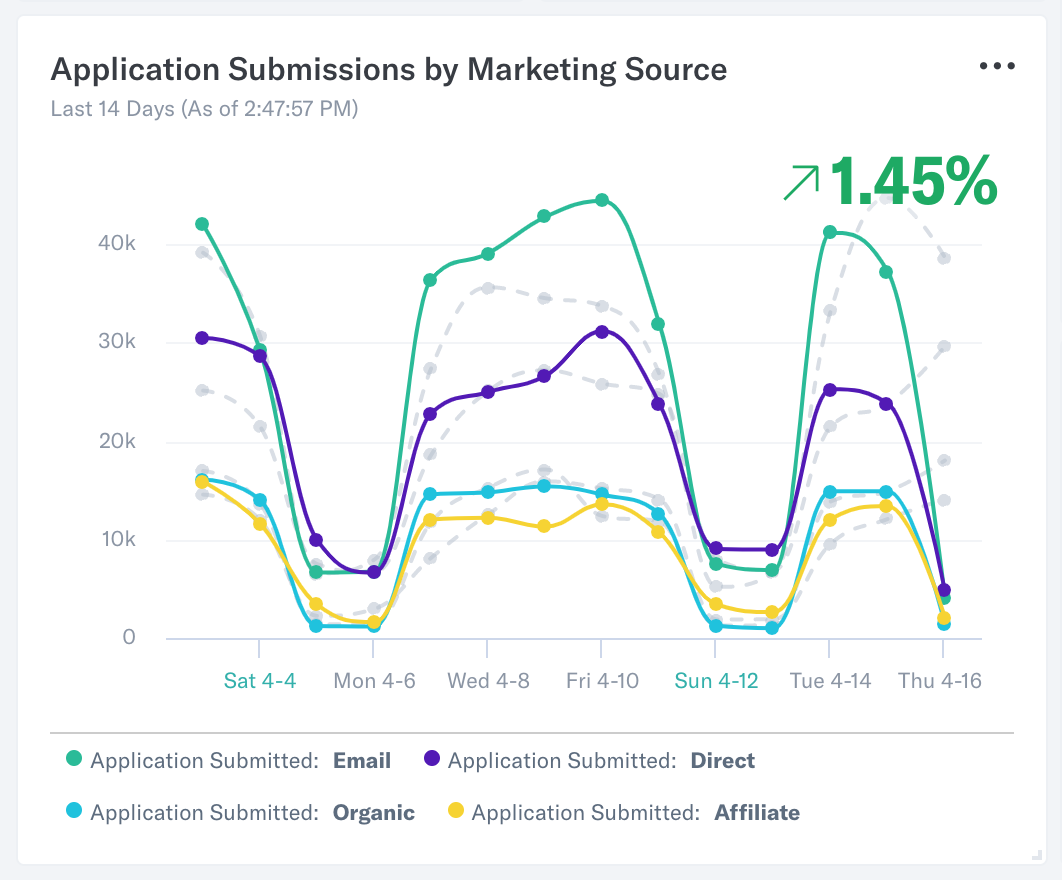
In Indicative, they’ve built out dashboards to measure performance across their affiliates and to break out attribution across channels. These dashboards offer Haven Life a complete view into the channels that drive more account creations, along with how those patterns yield success rates.
(Read the full case study here)
Drops
SaaS language learning app Drops is a digital-first company—their mobile app is the product. That means, in order to better understand their users, they need a Customer Analytics solution that can translate the diverse experiences of all their customers into useful and representative quantitative data.
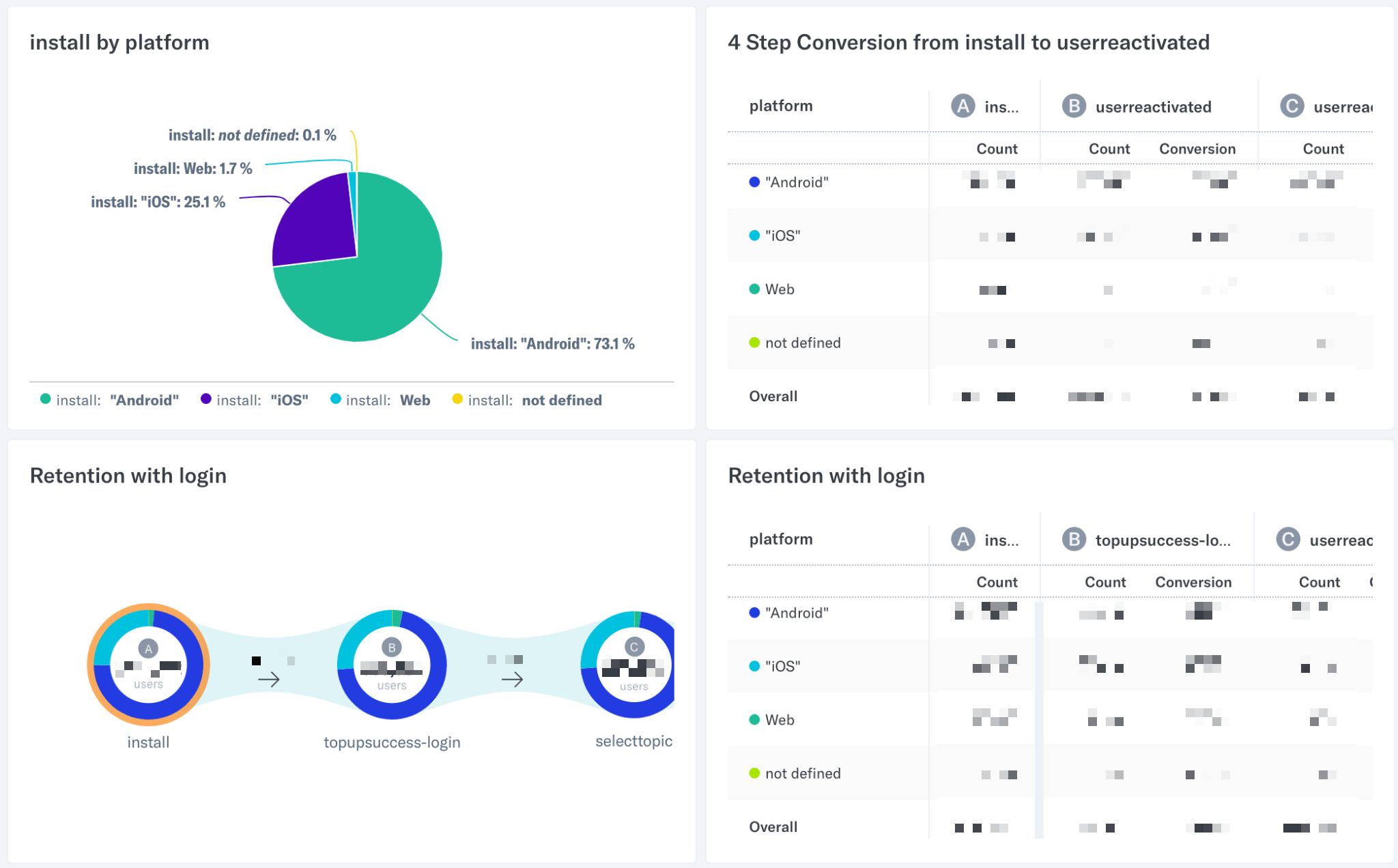
To do that, the Drops team uses Indicative to monitor key behaviors (like error messages, purchase events, first session completion, and more). Using Indicative, they’re able to gain a deeper perspective on customer experiences and build a more efficient strategy for ensuring customer happiness. That perspective can help them understand the behaviors that drive paid conversions, and in turn, facilitate those behaviors and increase free trial conversion rates.
(Read the full case study here)
What Indicative Customers Are Saying…
- Good Customer Analytics platform for use in Customer Journey and Marketing Analytics: “Easy connectivity to data sources such as Big Query. […] Then Indicative takes care of ingesting the data and syncing it. Once data is in Indicative the querying system for displaying information, filtering and slicing is very simple and human-readable. People without programming skills will feel comfortable using it.”
- Fast and easy to analyze data: “Indicative has a series of tools designed for a fast data consultation. It is easy to use and its graphics and animations are really gorgeous and so the data storytelling is easy. Also, since we don’t need SQL or any other type of programming to analyze the data, more team members can use and generate insights from Indicative.”
- The best funnel analysis tool I’ve used: “The best feature is their funnel analysis. The optional path helps you analyze a user’s journey across events that some would not necessarily know fall in the sequence. It helps you to find which is a better journey by analyzing the optional features in between.”



